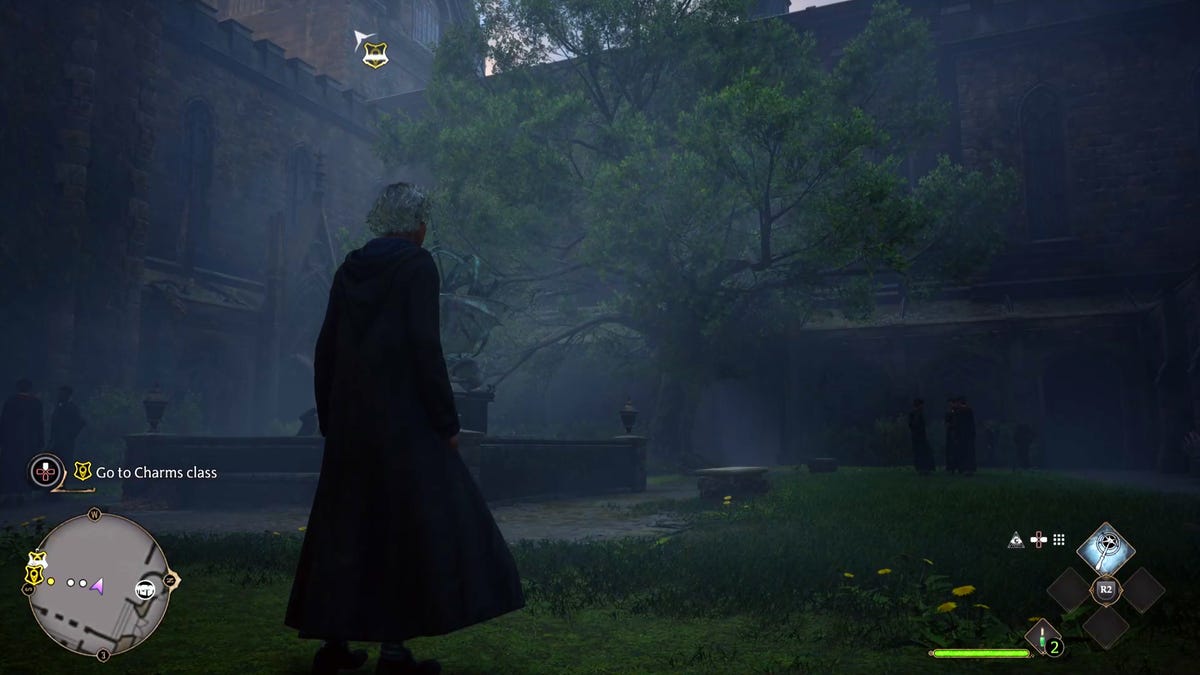 Why You Can Trust CNET
Why You Can Trust CNET Hogwarts Legacy: The Best PS5 and Xbox Graphics Options
The new Harry Potter game can have up to five separate graphics preset options.

Though PC games often have endless menus and submenus of graphics settings to tinker with, console games have historically run the same way for everyone on the same hardware. More recently, as consoles have diverged into multiple versions, such as the PS4/PS4 Pro or the Xbox Series X/Series S, you might get a choice between Quality and Performance modes (typically emphasizing either resolution or frames-per-second), but that's about it.
In Hogwarts Legacy, however, the Xbox and PS5 versions of the game have up to five available graphics settings. That's more than the usual Quality/Performance split, and the details of each can be a bit opaque. That's especially true considering one of the big selling points of console gaming is that you don't have to worry about settings or compatibility issues.
Which one to pick depends on a couple of things – your preference for sparkly eye candy over smooth motion, and whether you have a TV that supports VRR (variable refresh rate) and HDR.
As a quick rundown, Hogwarts Legacy's five graphics settings are:
- Fidelity mode
- Fidelity mode with raytracing
- Performance mode
- Balanced mode
- HFR (high frame rate) mode
The question comes down to: Do you want the game to look better or run smoother? Quality settings, called Fidelity in this case, in console games generally increase the resolution and add graphics detail and complexity, but they often lock the number of frames per second down to 30. Performance settings can drop the resolution and remove or downgrade graphics features, but they offer higher frame rates, ideally at least 60fps -- though not always. Newer TVs with higher refresh rates (or variable refresh rates) can run even faster frame rates.
Fidelity mode with raytracing is on the left, with a more accurate reflection. Performance mode is on the right.
In testing Hogwarts Legacy, it's not surprising that I ended up on the Balanced setting. It feels like a shame to skip the high-end graphics the PS5 (and Xbox Series X) are capable of. But at the same time, playing at 30fps feels choppy and unsatisfying. Hence, the in-the-middle option.
I've also been spoiled by testing the game on a series of high-end gaming PCs. On the new Razer Blade 18, which has an Nvidia RTX 4080 GPU, I was able to run the game at its highest graphics settings with QHD resolution and get frame rates above 100fps in most cases.
Even a slightly older gaming laptop with an Nvidia RTX 3070 was able to run at a mostly consistent 60fps at high graphics settings and FHD resolution. Both of these cases, when connected to a 65-inch LG OLED TV, were far superior visually to any of the PS5 options and didn't require me to choose graphics quality over frame rate.
What do all these performance mode settings actually do?
As Hogwarts Legacy is mostly exploration and conversation with some fighting, you can get away with the Fidelity mode and not feel like you're losing out on gameplay. Fast-paced action or online competitive games generally require those higher frame rates for effective play.
Adding the ray tracing option tweaked the visuals slightly on the PS5, most noticeably adding more realistic reflections. But it also seemed to further degrade performance. It's worth checking out, but you might not stick with it.
Besides the Balanced setting, the Performance setting is also somewhere in the middle. It drops some detail from Balanced, but feels like it hits 60fps more consistently without the occasional slowdown in the Balanced mode.
The extreme option on the other end is HFR Performance, which maximizes the frame rate but makes the game look worse. Again, a casual adventure/exploration game like this doesn't need anything over ~60fps, and only some TVs even support this.
What performance setting should I choose for Hogwarts Legacy?
For my money, if playing on a PS5, I'd choose the Balanced mode, but only after sampling the other available options as well. My second choice would be Fidelity mode, and in fact, I might switch back and forth between the two depending on my mood.
But the overall best experience is going to be on a gaming PC, and our breakdown of the required specs for that is here. Finally, below is a quick visual guide to the settings on PS5 I posted to TikTok earlier.

